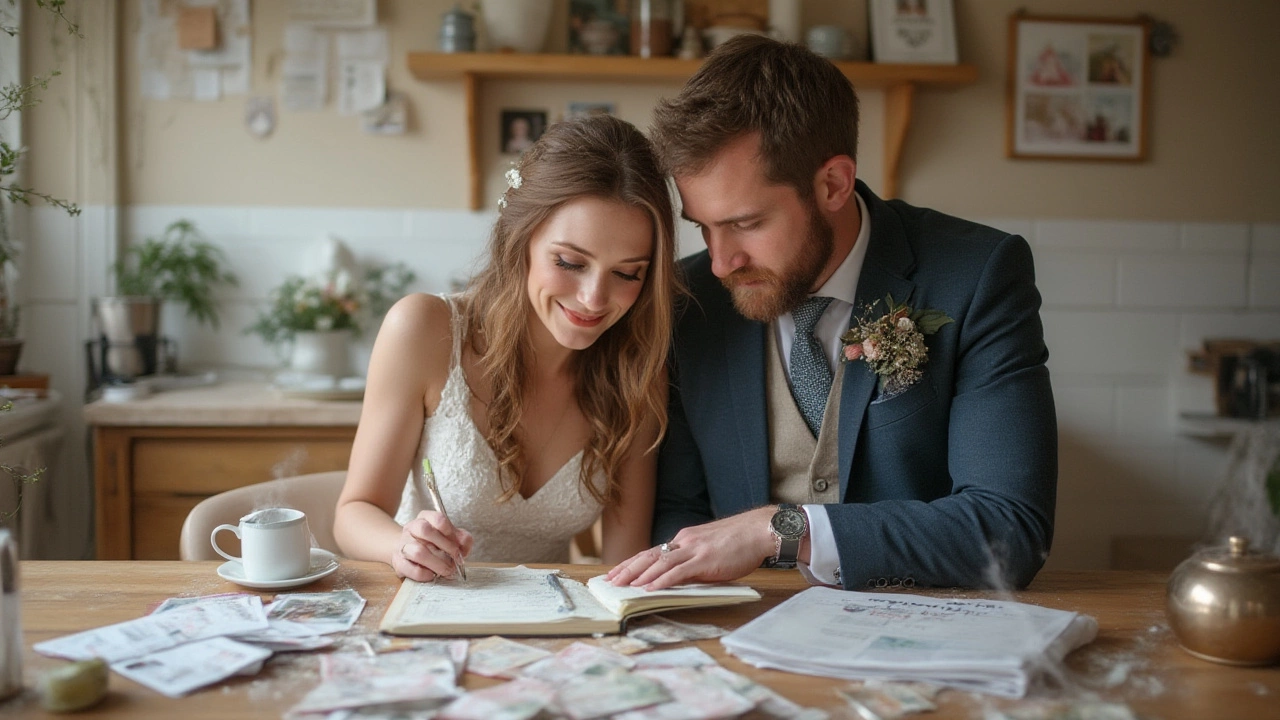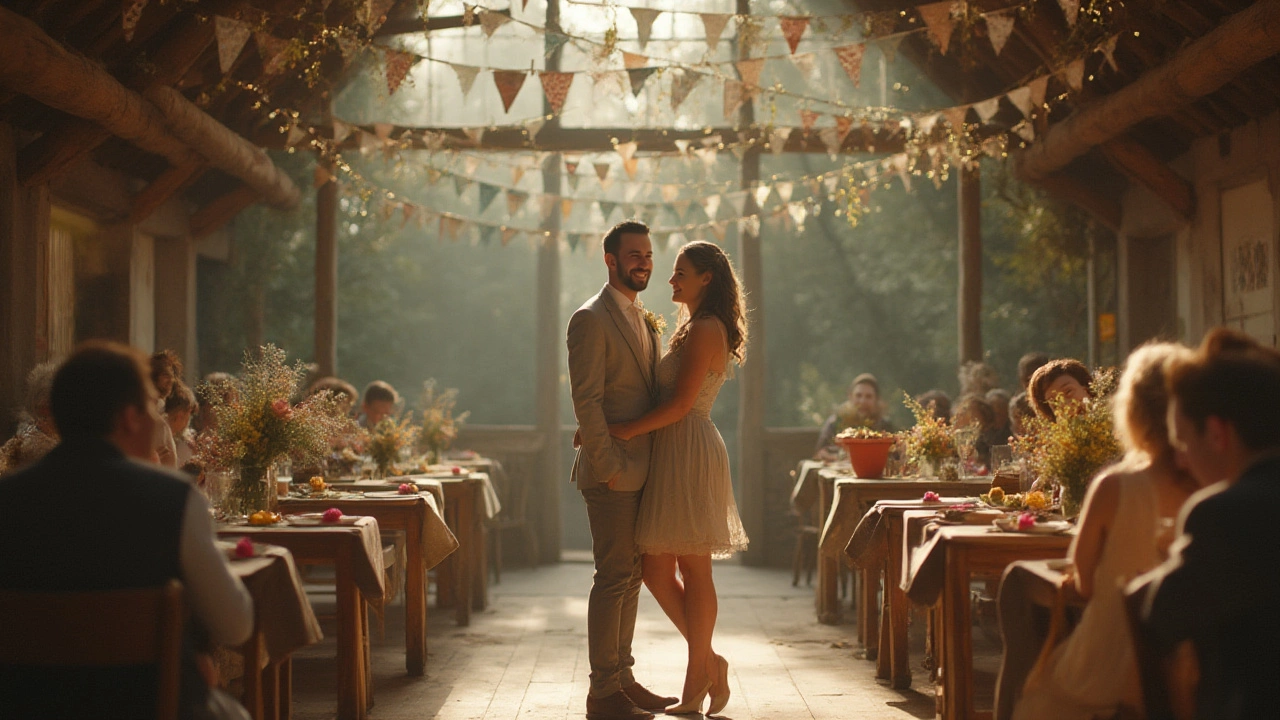Picture this: a magical wedding day, laughter, dancing, and love in the air—but without the knot-in-your-stomach stress over emptying your bank account. Sounds impossible? Hardly. Nearly a third of couples in the U.S. manage to tie the knot for $10,000 or less, trading fancy extras for personal touches that actually mean something. Forget the pressure to impress with five-figure flower budgets or $100-a-plate dinners. The secret isn’t sacrifice—it’s real-life smart planning, creative workarounds, and being stubbornly clear about what truly matters. Your wedding can be beautiful, unforgettable, and under ten grand. I’ll show you how, step by step, with solid facts and hard-won advice.
Setting Priorities: Deciding What Matters Most
Before you even peek at venues or scroll Pinterest, get honest about your priorities. Where do you want the wow? Is it the food, the music, the dress, the photographs, or that perfect outdoor ceremony? You’ll need to answer this upfront—no hedging. Sit down with your partner (wine and takeout recommended) and write a list of what’s absolutely non-negotiable for each of you.
- List your top 3 priorities—don't go over, even if you’re tempted.
- Accept you can’t have everything; instead, focus on your must-haves.
- If photographs matter most, that might mean less on flowers. If a stunning meal is the dream, think backyard venue instead of a ballroom.
I remember Ethan and I staring at my list—and arguing over whether great live music or a killer wedding cake was worth a bigger chunk of our budget. The music won. And yes, that meant a friend made our cake (and it was loved by everyone, even if the frosting wasn’t perfect).
Every dollar you spend should go toward one of your priorities, or at least not get in their way. Want numbers? According to a 2024 survey from The Knot, the average wedding costs over $33,000, but nearly 40% of couples spend under $10,000 by skipping sit-down dinners and luxury locations. You don’t have to settle—just redirect.
Building a Realistic Budget: Where Every Dollar Goes
The heart of budget success is a spreadsheet or a phone app tracking every cost—yes, even the twenty bucks for last-minute nail polish. Here’s what a $10,000 wedding budget often looks like (with a sample table for clarity):
| Category | Recommended Max Spend |
|---|---|
| Venue (including ceremony/reception space) | $2,000 |
| Food and drinks | $2,500 |
| Photography & Videography | $1,500 |
| Attire (dress, suit, etc.) | $1,000 |
| Music/Entertainment | $800 |
| Flowers & Decorations | $600 |
| Invitations & Stationery | $300 |
| Rings | $700 |
| Miscellaneous/Emergency fund | $600 |
That’s right—wedding on a budget doesn’t mean barebones or boring. These aren’t numbers pulled from thin air; couples report spending within these categories, and even coming in under by doing a little DIY or finding clever alternatives.
- Use digital invites—sites like Paperless Post cost less and look gorgeous.
- Borrow decor from recently married friends or check out local Facebook groups—lots of people give away gently used wedding stuff.
- Opt for a Friday night or Sunday brunch wedding for serious venue discounts (sometimes up to 50% off prime dates).
- If you crave dreamy photos but not the full-day coverage, hire the photographer for four to six hours instead of ten.
Track expenses weekly, not just monthly—it’s way too easy to let small purchases snowball. Build in a $600 emergency fund. It covers forgotten tasks, unexpected fees, or the florist going MIA with your bouquet (it happens).

Smart Venue and Food Choices: The Biggest Cost-Cutters
The venue can eat nearly a quarter of your budget, so flexibility pays off big. Community halls, public parks, or even your childhood backyard have hosted some of the most heartfelt weddings I’ve seen. One of my friends rented a historic library for $700 and filled it with candlelight, turning a public space into something magical. Always check your city's permit policies for outdoor weddings—you don’t want your vows interrupted by a park ranger.
- Book in the off-season (winter or early spring), and you’ll score better rates and more available dates.
- Ask local small restaurants about private event rentals—they often come with chairs, tables, and sometimes even basic decor.
- Consider city-owned spaces or state parks. They can be beautiful and affordable, and sometimes they’re less than $300 for an afternoon.
Catering is another huge chunk. You’re not stuck with chicken-or-fish plated dinners. Food trucks, picnic-style buffets, or family-style meals save hundreds, sometimes thousands. According to WeddingWire’s 2024 insights, the average catering bill per person is $70—but swap in a taco truck or BBQ buffet, and you’re looking at $15-$30 a guest. Don’t be shy about asking trusted friends or family to help potluck the desserts: homemade pies or cookies are always a hit.
- Skip fancy tiered cakes from big bakeries. Local bakers or your grandma’s famous chocolate chip cookies can be much more memorable.
- Buy your alcohol wholesale (if your venue allows). Some stores even take back unopened bottles after the event.
- Limit the open bar to beer, wine, and one special cocktail to keep costs sane and lines shorter.
Don’t forget: venues often have hidden fees for setup, cleaning, or using outside vendors. Read every contract, and don’t be afraid to negotiate. If they want your business, most places will at least throw in an extra hour or waive a cake-cutting fee (yes, that’s a thing—sometimes $2 or $3 per slice!).
Personalization and DIY: Little Touches, Big Savings
The most unforgettable weddings aren’t about perfect centerpieces—they’re about real moments and details that feel like you. Save the money, skip the wedding industrial complex, and pour the energy into what feels authentic.
- Make your own centerpieces with thrifted vases, wildflowers, or greenery from the farmer’s market. YouTube has easy tutorials, and friends often love to help.
- Use Spotify playlists instead of a DJ, especially for smaller gatherings. Just assign an outgoing friend as your designated MC.
- Create a wedding website—it’s free with sites like Wix or Zola, and you can share all your details (plus collect RSVPs without the postage).
If you want meaningful decor, look for items you’ll reuse at home after the wedding. Our favorite string lights now hang in our backyard, and every time I see them, I’m back on the dance floor under the stars. Other couples I know handwrote their place cards and menus, or drew (or printed) their own programs—saving hundreds and adding a handmade touch.
Get the whole wedding party involved. Group DIY projects can double as hangouts. Make it fun—order pizza, open some wine, and work together. Small personal details, like a welcome sign you painted yourself or a playlist you curated, stand out much longer than monogrammed napkins or custom stamps.
- Focus on what guests remember: good food, music, and your happiness. The rest? Trust me, nobody will talk about the napkin rings.
- Wedding rentals (think plates, tablecloths) can be found for less from local event supply companies than your venue’s marked-up fees.
If you’re crafty, think of favors you can make: homemade jam, candles, or simple seed packets. But don’t stress about favors if they’re not important to you—most guests leave them behind anyway. Instead, write a heartfelt thank-you on each place card, or record a short video greeting to be played at the start of the reception.

Bargain Hunting and Trusted Shortcuts: Insider Moves
Time to get strategic with your spending: bargains, smart swaps, and a little bold negotiating can go a long way. Take wedding dresses—the "average" is $1,900, but I found mine gently used for $450 from a local resale shop, dry cleaned and with the tags still on. Rental shops and online stores like Stillwhite, Lulus, or Azazie offer gorgeous, trendy styles without the sticker shock. The same goes for suits and tuxes: rentals and seasonal sales are your friend.
- Book new photographers building their portfolio; you’ll often pay half the usual rate. Just ask for lots of sample work to be safe.
- Combine services: some DJs also do photo booths, or venues may offer in-house coordinators at little extra cost.
- Don’t ignore secondhand options. Facebook Marketplace, local Buy Nothing groups, and eBay are full of wedding decorations barely used (sometimes free if you pick up quickly).
- Sign up for wedding newsletters and local vendor alerts—coupons and sales pop up everywhere between January and April.
- Ask vendors about discounts for cash payments. A surprising number will save you money if you skip credit card processing fees.
For makeup and hair, book a talented friend or look for students from beauty schools needing experience. They often charge much less. Don’t overlook college music students for ceremony or cocktail hour performances either—many cost $150 or less and sound amazing.
Transportation doesn’t need to be a limo—borrow a family member’s classic car for photos or use rideshares to get the wedding party from hotel to venue. If you’re hosting a smaller, all-in-one event, people can walk or use public transit (and honestly, most guests appreciate the laidback vibe).
If you’re willing to pick non-traditional anniversary dates—think Thursday nights or weekday mornings—the savings are wild. Venues, caterers, and even photographers slash prices. Remember, the average August or October wedding costs 40% more simply because of demand.
Last trick: skip the traditional wedding registry and request honeymoon funds or help with wedding costs instead. Most guests are happy to chip in when they see how thoughtfully you’re planning every detail. Make it fun—Ethan and I had a "wishing well" box for travel dreams, and reading people’s notes was a highlight of our day.
